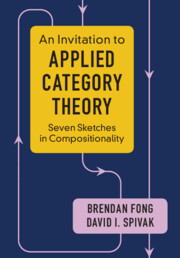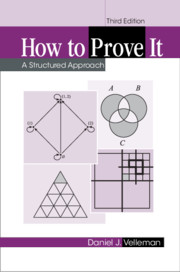Refine search
Actions for selected content:
48202 results in Computer Science
ROB volume 37 issue 8 Cover and Front matter
-
- Article
-
- You have access
- Export citation
ROB volume 37 issue 8 Cover and Back matter
-
- Article
-
- You have access
- Export citation
Codegree Conditions for Tiling Complete k-Partite k-Graphs and Loose Cycles
- Part of
-
- Journal:
- Combinatorics, Probability and Computing / Volume 28 / Issue 6 / November 2019
- Published online by Cambridge University Press:
- 09 July 2019, pp. 840-870
-
- Article
- Export citation
Positive association of the oriented percolation cluster in randomly oriented graphs
- Part of
-
- Journal:
- Combinatorics, Probability and Computing / Volume 28 / Issue 6 / November 2019
- Published online by Cambridge University Press:
- 08 July 2019, pp. 811-815
-
- Article
- Export citation
Constructive Galois Connections
- Part of
-
- Journal:
- Journal of Functional Programming / Volume 29 / 2019
- Published online by Cambridge University Press:
- 08 July 2019, e11
-
- Article
-
- You have access
- Export citation

An Invitation to Applied Category Theory
- Seven Sketches in Compositionality
-
- Published online:
- 05 July 2019
- Print publication:
- 18 July 2019
OPTIMAL MOMENT INEQUALITIES FOR ORDER STATISTICS FROM NONNEGATIVE RANDOM VARIABLES
-
- Journal:
- Probability in the Engineering and Informational Sciences / Volume 35 / Issue 2 / April 2021
- Published online by Cambridge University Press:
- 05 July 2019, pp. 316-330
-
- Article
- Export citation

How to Prove It
- A Structured Approach
-
- Published online:
- 04 July 2019
- Print publication:
- 18 July 2019
-
- Textbook
- Export citation
COMPLETE ADDITIVITY AND MODAL INCOMPLETENESS
-
- Journal:
- The Review of Symbolic Logic / Volume 12 / Issue 3 / September 2019
- Published online by Cambridge University Press:
- 04 July 2019, pp. 487-535
- Print publication:
- September 2019
-
- Article
- Export citation
ON VARIABILITY OF SERIES AND PARALLEL SYSTEMS WITH HETEROGENEOUS COMPONENTS
- Part of
-
- Journal:
- Probability in the Engineering and Informational Sciences / Volume 34 / Issue 4 / October 2020
- Published online by Cambridge University Press:
- 03 July 2019, pp. 626-645
-
- Article
- Export citation
Comparison of Sprinting With and Without Running-Specific Prostheses Using Optimal Control Techniques
-
- Article
-
- You have access
- Open access
- Export citation
Implementing a Library for Probabilistic Programming Using Non-strict Non-determinism
-
- Journal:
- Theory and Practice of Logic Programming / Volume 20 / Issue 1 / January 2020
- Published online by Cambridge University Press:
- 02 July 2019, pp. 147-175
-
- Article
-
- You have access
- Open access
- Export citation
PhD Abstracts
- Part of
-
- Journal:
- Journal of Functional Programming / Volume 29 / 2019
- Published online by Cambridge University Press:
- 01 July 2019, e10
-
- Article
-
- You have access
- Export citation
AIE volume 33 issue 3 Cover and Back matter
-
- Article
-
- You have access
- Export citation





